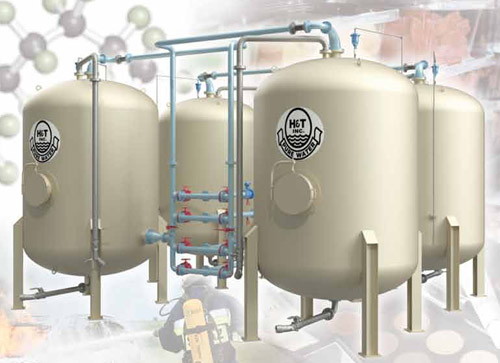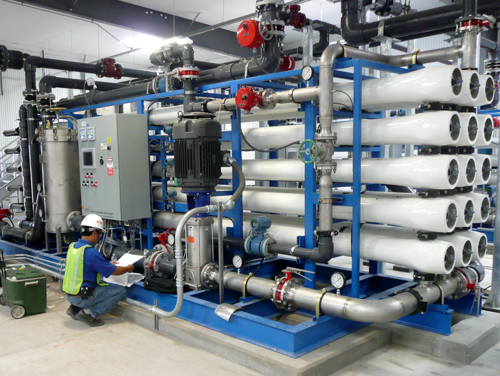Comprehensive PFAS Management Strategies for Contaminated Sites
Comprehensive PFAS Management Strategies for Contaminated Sites
Blog Article
Just How PFAS Treatment Makes Certain Clean and Lasting Water
The presence of PFAS, generally understood as "for life chemicals," positions substantial difficulties to water quality and public wellness. Advanced treatment innovations, consisting of activated carbon adsorption and membrane layer filtration, have become effective options to mitigate these pollutants. By using these methods, neighborhoods can not just accomplish cleaner water yet also foster sustainable techniques that protect environments. However, the ramifications of these therapies expand beyond immediate health advantages; they elevate crucial concerns regarding lasting water management approaches that have to be dealt with to make sure a durable future. What does this mean for our method to water sustainability?

Comprehending PFAS Contamination
PFAS, or per- and polyfluoroalkyl materials, have actually become a significant environmental worry because of their prevalent frequency and perseverance in the environment. These synthetic chemicals have been utilized in various commercial applications and customer products, consisting of non-stick kitchenware, water-proof apparel, and food product packaging, because of their one-of-a-kind residential or commercial properties such as water and grease resistance.
The contamination of soil and water sources by PFAS occurs primarily through industrial discharges, firefighting foam usage, and leaching from garbage dumps. pfas management. Once released, these compounds are immune to destruction, resulting in their accumulation in the setting. This determination elevates crucial concerns, as PFAS can travel fars away through groundwater and surface water supply, influencing alcohol consumption water materials and environments

Health And Wellness Dangers of PFAS
The determination of PFAS in the atmosphere raises significant wellness problems for people subjected to these substances. Study has connected PFAS direct exposure to various negative health and wellness impacts, including immune system disorder, liver damage, and boosted danger of specific cancers.
The ubiquity of PFAS in consumer products, such as non-stick pots and pans, water-repellent materials, and food product packaging, further intensifies the danger of direct exposure. Drinking water infected with PFAS is a considerable problem, as these chemicals can leach right into groundwater resources. Susceptible populaces, including youngsters and those living near industrial sites, might face elevated threats due to their establishing systems and possible for higher exposure degrees.
As recognition of these health dangers remains to expand, regulatory companies are starting to develop guidelines for PFAS levels in alcohol consumption water. Public health efforts are essential to alleviate direct exposure and protect communities from the long-lasting results of these hazardous substances.

Ingenious Treatment Technologies
Just how can we successfully tackle the obstacles positioned by PFAS More Help contamination in water resources? Cutting-edge treatment technologies are arising as vital solutions in the pursuit for clean water. These approaches concentrate on the elimination or damage of per- and polyfluoroalkyl substances (PFAS), which are Go Here infamous for their determination in the environment.
One encouraging method is adsorption using sophisticated materials, such as triggered carbon and ion exchange resins. These products have actually shown efficiency in catching PFAS molecules from water. One more noteworthy innovation is membrane layer filtering, which utilizes nanofiltration and reverse osmosis to different contaminants at the molecular level, hence supplying a barrier against PFAS.
In addition, advanced oxidation procedures (AOPs) employ solid oxidants to break down PFAS substances right into safe byproducts. This approach is particularly efficient for dealing with highly polluted water resources. Bioremediation strategies, employing particular microbes, are also being explored to deteriorate PFAS.
As study continues, hybrid systems that incorporate multiple modern technologies may provide boosted efficiency, addressing the complexities of PFAS contamination. The advancement and execution of these innovative treatment modern technologies are vital actions toward guaranteeing the safety and sustainability of our water sources.
Advantages of Efficient PFAS Treatment
Properly dealing with PFAS contamination in water sources significantly boosts public health and wellness and environmental safety and security. PFAS, commonly referred to as "forever chemicals," are resistant to deterioration and can accumulate in the body, resulting in serious wellness dangers such as cancer cells, liver damage, and body immune system dysfunction. By implementing reliable treatment approaches, communities can lower exposure to these dangerous substances, inevitably enhancing the health outcomes of their populaces.
Moreover, effective PFAS therapy contributes to the conservation of local ecosystems. Polluted water can detrimentally affect marine life and disrupt the delicate equilibrium of local environments. By guaranteeing tidy water, treatment processes secure biodiversity and maintain environmental honesty.
Additionally, efficient PFAS removal can cultivate public confidence in water high quality. When areas are assured that their drinking water is without hazardous impurities, it advertises a sense of security and wellness. This trust fund is important for neighborhood involvement and assistance for ongoing water management efforts.
Future of Water Sustainability
Amidst expanding problems about water top quality and scarcity, the future of water sustainability depends upon innovative strategies and collective navigate to this site initiatives. As communities face the looming threats of contaminants like PFAS, the growth of advanced treatment technologies is important. These technologies not only concentrate on the removal of unsafe materials however likewise promote the reuse and recycling of water, consequently reducing overall need.
In addition, effective water governance plays a crucial duty in making certain lasting techniques. Policymakers must integrate clinical research study with regulative structures to establish clear guidelines for water use and treatment. Stakeholder involvement, consisting of neighborhood communities and industries, fosters a sense of shared obligation and motivates lasting techniques throughout various fields.
Financial investment in framework is also essential; upgrading aging systems to include modern purification and purification methods can considerably boost water high quality. Furthermore, embracing green modern technologies, such as all-natural filtration systems, can provide environmentally friendly options.
Ultimately, the future of water sustainability depends on an all natural technique that incorporates technology, policy, and neighborhood participation. By prioritizing these aspects, we can guard our water sources for generations ahead, ensuring tidy and lasting water for all.
Final Thought
In conclusion, the efficient therapy of PFAS is vital for guaranteeing clean and lasting water. By employing sophisticated modern technologies such as triggered carbon adsorption, membrane layer filtration, and progressed oxidation processes, areas can significantly reduce the wellness threats related to these pollutants. In addition, the combination of these therapy methods sustains environment security and enhances biodiversity. Ultimately, robust PFAS treatment methods add to long-lasting durability in water monitoring, promoting public count on water high quality and promoting sustainable techniques.
Report this page